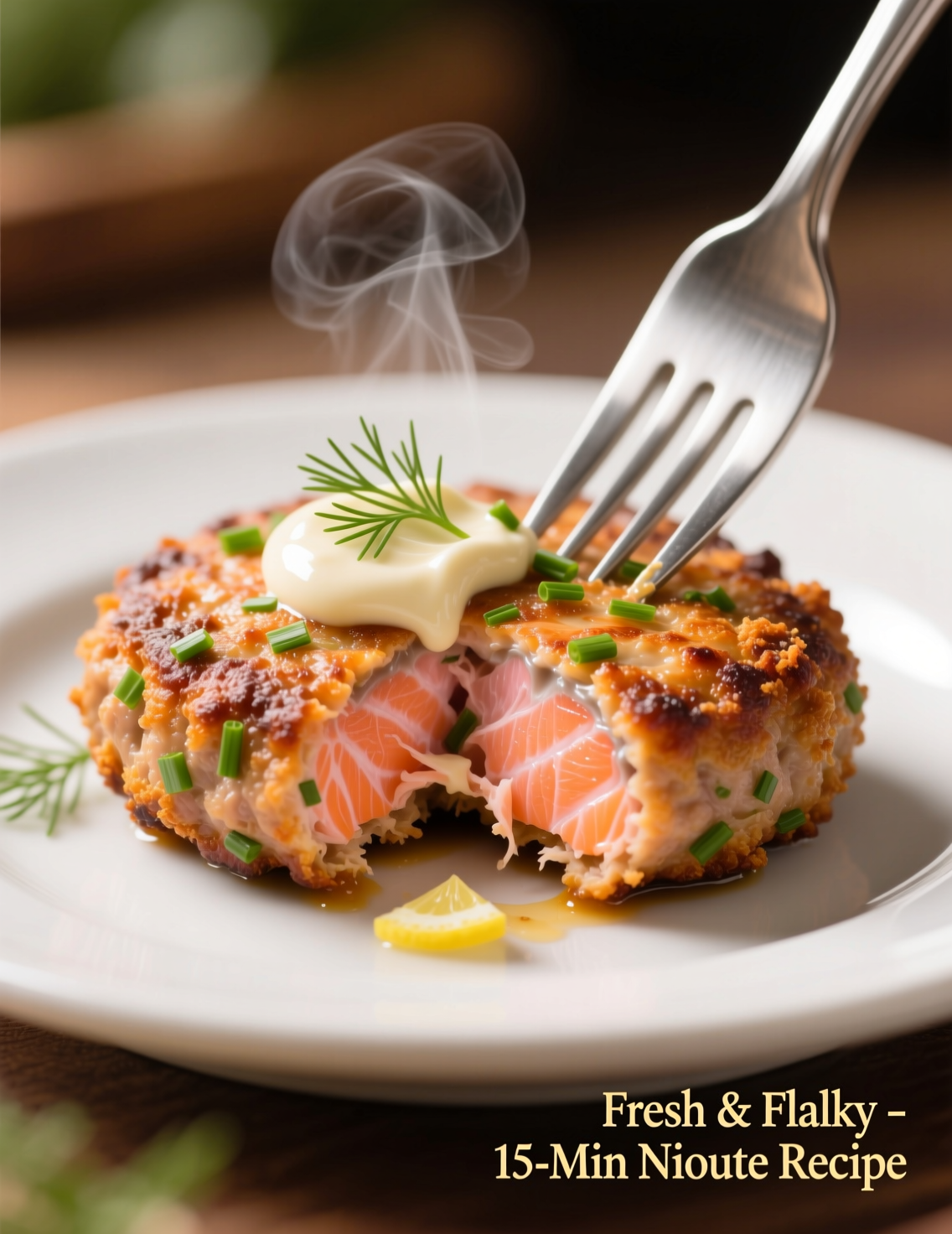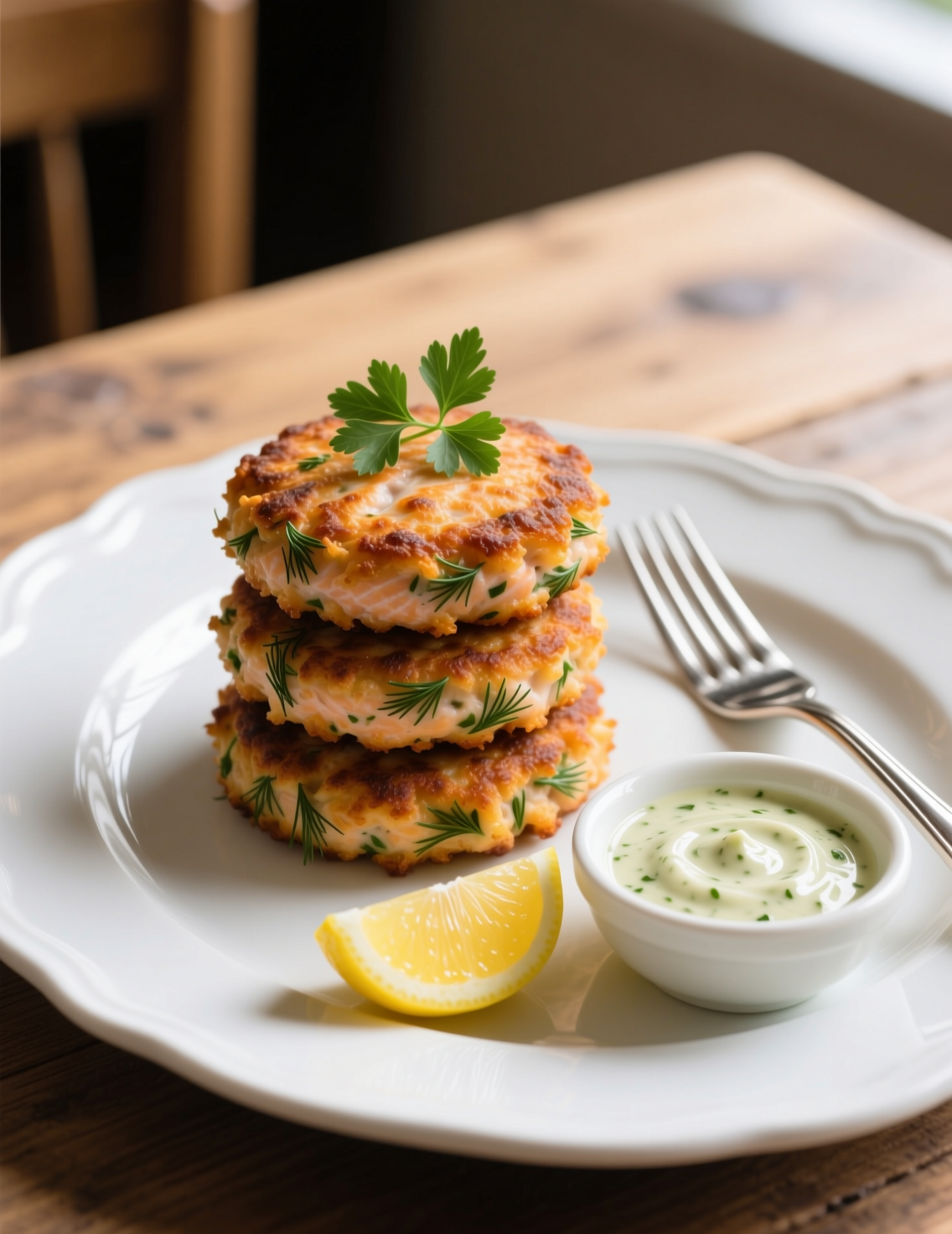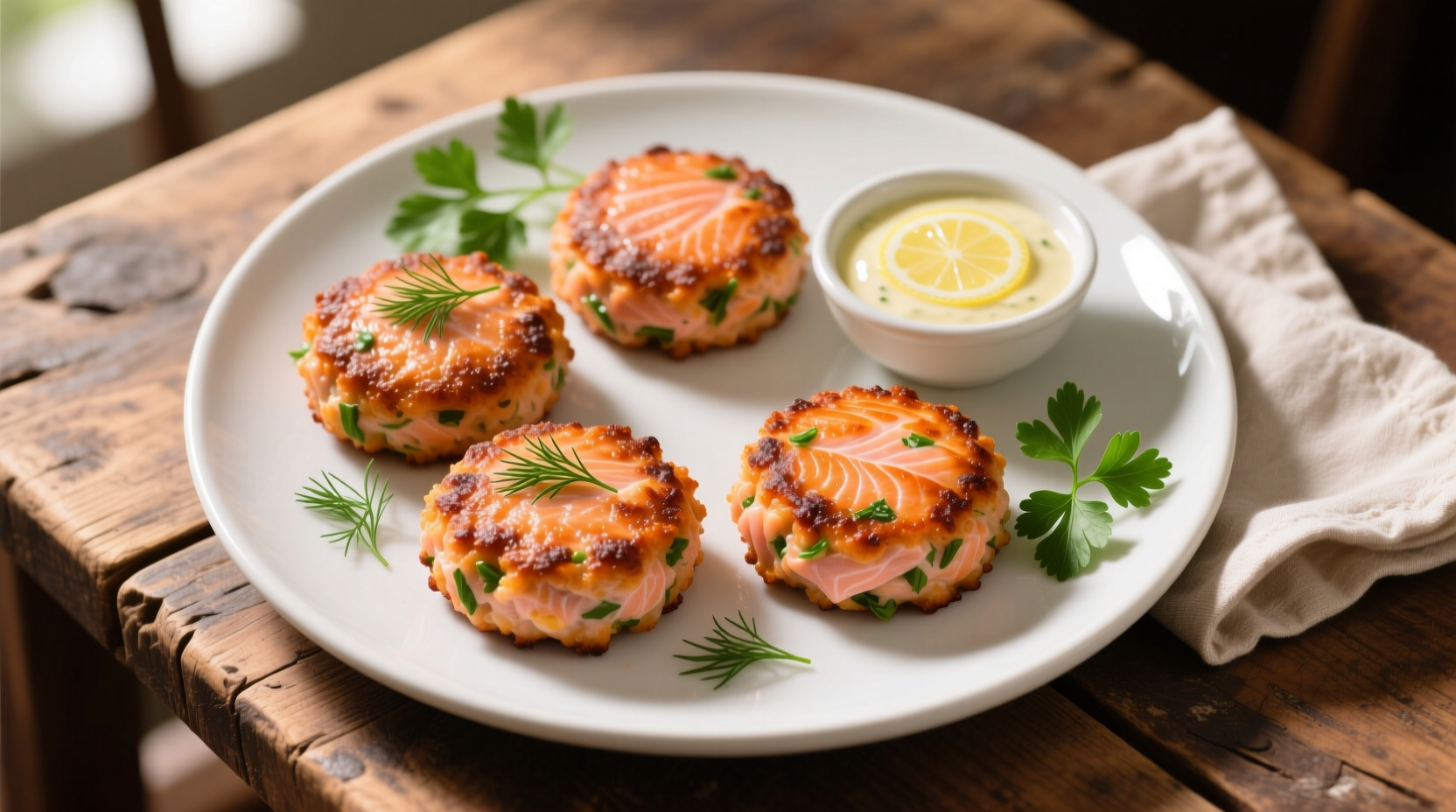When people ask me about quick seafood meals that feel restaurant-level yet doable in a home kitchen, I almost always point to salmon patties. They’re humble, fast, and full of flavor. But the thing is—doing them right is trickier than folks imagine. This article will guide you, not just through the recipe itself, but also into the craft, science, and secrets behind making salmon patties that don’t crumble, don’t taste bland, and actually wow a crowd.
Why Salmon Patties Deserve More Respect
Salmon patties are often thrown together with canned salmon, some breadcrumbs, maybe an egg, and fried until golden. Simple, yes. But simplicity hides subtlety. If you’ve ever had patties that fell apart in the skillet or tasted dry as cardboard, you know the struggle. What elevates them is understanding moisture balance, binders, seasoning ratios, and pan temperature. Professional kitchens nail this every time because they treat salmon like the premium ingredient it is.
Statistics back the popularity too. In the U.S. alone, salmon ranks among the top three most consumed seafoods, just behind shrimp and canned tuna. That’s not just consumer trend—it’s supply chain economics. Easy to source, nutritionally loaded with omega-3 fatty acids, and versatile in texture, salmon naturally fits both fine dining and weeknight cooking.
Choosing the Right Salmon
The recipe calls for four servings, so you’ll need around 16 ounces of salmon. Now here’s where choice matters. You can go canned, fresh, or even leftover cooked fillets. Canned pink salmon is affordable, widely available, and works beautifully when drained well. Fresh salmon, particularly sockeye or coho, gives more vibrant flavor and richer color. Leftover roasted salmon from last night? That’s a smart zero-waste move.
One detail that’s easy to miss: bones in canned salmon. They’re edible and full of calcium, but for a smoother texture, remove them. In professional kitchens, cooks often pulse fresh salmon briefly in a food processor. This keeps some chunkiness while ensuring even mixing. Don’t pulverize though—you want structure, not salmon paste.

Essential Ingredients
For four servings, here’s the baseline:
- 16 oz salmon (canned or cooked fresh)
- 1 large egg (binder)
- ½ cup breadcrumbs (structure)
- ¼ cup onion, finely diced
- 2 tbsp fresh parsley, chopped
- 1 tsp Dijon mustard
- ½ tsp smoked paprika
- ½ tsp salt
- ¼ tsp black pepper
- Juice of half a lemon
- 2 tbsp oil (for pan-frying)
This list isn’t sacred scripture. It’s a tested balance. Professionals tweak it depending on texture goals. Panko breadcrumbs give lighter crunch, while standard crumbs hold more tightly. Some chefs even swap crumbs for crushed saltines—old Southern trick that changes the bite completely.
Mixing with Intention
Throwing ingredients into a bowl is easy, but mixing requires a little finesse. Too much handling and the patties become dense. Too little, and they’ll crumble apart. Use your hands lightly, almost folding instead of kneading. Think of it like coaxing the mixture into cooperation, not forcing it.
A tip from restaurant practice: chill the formed patties for at least 20 minutes before cooking. The cold firms the fat and egg, making them hold shape better when heat hits the pan. It’s one of those small steps that separates professional execution from rushed home versions.
Cooking Methods and Temperatures
Pan-frying is the classic route. Medium heat, not blasting high. Salmon patties need time to brown evenly without burning before the inside heats through. Cast iron or heavy stainless pans give best crust. Each patty usually takes about 3–4 minutes per side.
Baking works too, at 375°F for around 15 minutes. It’s a lighter method, no greasy spatters, but you sacrifice a bit of crisp edge. Air fryers? Surprisingly effective. Eight minutes at 375°F gives a golden finish with minimal oil. Professionals often test all three depending on kitchen needs—catering events love baked for volume, while plated service loves pan-fried for presentation.
The Science of Moisture Control
One of the most common failures is patties that are either dry or soggy. Moisture management solves both. Drain canned salmon thoroughly. Pat dry if needed. On the other side, don’t skimp on binders like egg and crumbs. They capture juices and prevent drying.
Research shows salmon fillets naturally lose about 18–20% moisture when cooked at 350–375°F. Overcooking pushes that number higher, leading to dryness. That’s why medium heat and careful timing are non-negotiable. You’re not just cooking—you’re balancing water activity, protein coagulation, and fat rendering all at once.
Flavor Beyond Basics
The seasoning above is solid, but professionals layer flavor in subtle ways. A teaspoon of Old Bay adds coastal nostalgia. Minced fresh dill brings brightness. Chopped capers or pickles create briny pops. Even a dash of hot sauce in the mix adds depth that tasters can’t quite pinpoint.
Think about sauces too. Salmon patties are fine solo, but extraordinary with the right partner. Classic tartar, lemon-dill yogurt, or sriracha mayo each transform the dish into something more than weekday dinner. Pairing sauce to mood or occasion is a skill pro chefs never overlook.
Common Mistakes to Avoid
- Overmixing: leads to rubbery patties.
- Skipping chill step: patties fall apart in pan.
- Pan too hot: outside burns, inside raw.
- Too much filler: flavor disappears, texture turns bready.
I’ve seen kitchens lose entire batches to these errors. Small oversights add up fast when working with delicate proteins like salmon.
Serving and Pairings
For four servings, portion patties into four or eight pieces depending on appetite. Two smaller patties per plate often look more refined than one large slab. Serve with a fresh salad, roasted potatoes, or a light slaw. Professionals also plate with microgreens and lemon wedges for that polished finish.
Wine pairings matter too. A crisp Sauvignon Blanc or unoaked Chardonnay balances richness. Beer lovers should lean toward pilsners or wheat ales. Non-alcoholic? Sparkling water with a squeeze of lime cuts through the fat beautifully.

Nutritional Snapshot
A single salmon patty (about 4 oz) delivers roughly:
- 220 calories
- 16 g protein
- 11 g fat (mostly healthy omega-3s)
- 12 g carbs
Compared to beef or pork patties, salmon offers leaner protein and heart-beneficial fats. The American Heart Association specifically recommends at least two servings of fatty fish like salmon per week. So this recipe isn’t just tasty—it’s aligned with dietary guidelines for cardiovascular health.
Trends and Innovations
Chefs globally are reimagining salmon patties. In Scandinavian kitchens, rye crumbs replace white crumbs, adding nutty depth. In Japan, miso paste sneaks into the mix, boosting umami. Plant-forward diners even mix in shredded zucchini or carrots to stretch flavor and boost nutrition.
Food trucks and fast-casual restaurants have pushed salmon patties into burger buns with brioche, pickled onions, and avocado. It’s not traditional, but it shows how adaptable these patties are in modern food culture.
Addressing Misconceptions
One big myth is that fresh salmon always beats canned. Not true. High-quality canned salmon is often processed right after catch, locking in flavor and nutrients. Another misconception: patties are inherently unhealthy because they’re fried. Pan-frying in minimal oil, or baking, makes them as balanced as grilled fish. It’s all about method, not the base ingredient.
Storage and Meal Prep
Cooked salmon patties hold well in the fridge for up to three days. Wrap tightly or store in airtight containers. They freeze too—just flash freeze on a tray before bagging. Reheat gently in the oven or skillet to revive crispness. Microwave? Only if you don’t mind losing texture.
Meal prep enthusiasts love these patties because they adapt easily. Pop one over rice bowls, tuck into wraps, or crumble into pasta. That flexibility makes them more than just a dinner item—they’re a meal solution.
Expert Tips to Elevate
- Brush uncooked patties with a touch of oil before baking for even browning.
- Add finely grated carrot or zucchini for hidden veggies.
- Use Japanese panko for maximum crunch.
- Sprinkle finishing sea salt right after frying for flavor burst.
- Always rest patties 2 minutes before serving so juices redistribute.
These may seem minor, but pros know the difference lives in details.
Final Thoughts
Easy salmon patties for four servings may sound basic, but they’re a dish that rewards attention. Respect the salmon, balance moisture, and treat the cooking as a craft, not a chore. Whether you’re feeding a family, testing recipes in a professional kitchen, or simply chasing the perfect bite, this recipe proves salmon patties can be more than quick food—they can be memorable.
So next time someone shrugs off patties as “just canned fish with crumbs,” smile, and let your perfectly crisp, tender, lemon-bright salmon patties do the talking.
FAQs
Can I use fresh salmon instead of canned?
Yes, fresh salmon works perfectly and often gives richer flavor, just make sure it’s cooked or pulsed first.
How do I stop salmon patties from falling apart?
Chill the patties before cooking and don’t skip the egg and breadcrumbs as binders.
Can salmon patties be baked instead of fried?
Yes, bake at 375°F for about 15 minutes for a lighter version.
What sauces go best with salmon patties?
Tartar sauce, lemon-dill yogurt, or spicy sriracha mayo pair beautifully.
Are salmon patties healthy?
Yes, they’re high in protein and omega-3s, making them heart-healthy.
How long do cooked salmon patties last in the fridge?
They keep well for up to 3 days in an airtight container.
Can salmon patties be frozen?
Yes, freeze after cooking or uncooked shaping, then reheat gently.
What’s the best oil for frying salmon patties?
Neutral oils like canola, grapeseed, or light olive oil work best.
How many patties does this recipe make for 4 servings?
Usually 4 large patties or 8 smaller ones depending on portion size.
Can I add vegetables to salmon patties?
Yes, grated zucchini, carrots, or bell peppers add flavor and nutrition.

Mariana is a passionate home cook who creates delicious, easy-to-follow recipes for busy people. From energizing breakfasts to satisfying dinners and indulgent desserts, her dishes are designed to fuel both your body and hustle.
When she’s not in the kitchen, she’s exploring new flavors and dreaming up her next recipe to share with the Foodie Hustle community.

